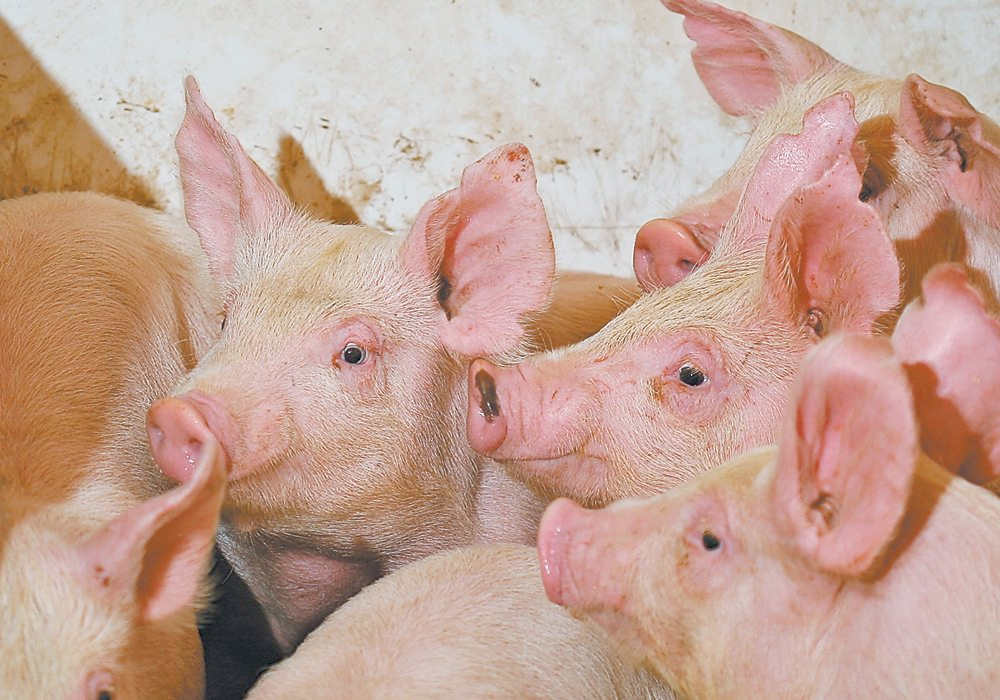Veterinarians are taught that when we hear hoofbeats, think of horses, not zebras.
This is sage advice to help maintain a diagnostic process based on probabilities.
If I come across a nursery pig that has died suddenly with organs that have tiny hemorrhages and slightly enlarged lymph nodes, I will request tests to confirm a Streptococcus suis infection. This would be the most likely outcome of the diagnostic process 99 percent of the time.
But sometimes there are zebras with hoofbeats that sound just like horses!
Read Also

Canada told trade crisis solutions in its hands
Canadians and Canadian exporters need to accept that the old rules of trade are over, and open access to the U.S. market may also be over, says the chief financial correspondent for CTV News.
On our list of other diagnoses to consider are African swine fever and several other viral and bacterial infections. The outcome of missing a diagnosis of ASF, a reportable foreign animal disease, could be catastrophic for the Canadian swine industry.
I will summarize some of the emerging “zebras” that could be found on farms, and that we should watch for.
Streptococcus equi subspecies zooepidemicus (Strep zoo)
This opportunistic bacterial infection has been slowly emerging as a new disease to Canada, having been found on five farms in Western Canada since 2019. Strep zoo has been identified in Europe, Asia and the United States.
Farms should suspect Strep zoo if they see rapid onset of very sick animals, abortions and high mortality in older growing animals and mature breeding stock. Healthy appearing animals in the morning can be dead in the afternoon.
While infection is generally quite responsive to antibiotic treatment, the herd immunity does not seem to build quickly on a farm, and losses will continue indefinitely. All farms that have been infected to date will ultimately end up depopulating.
Porcine sapovirus diarrhea
Added to the assortment of viruses and bacteria that cause neonatal diarrheas, sapovirus has been identified on several farms across the country and is reported to be present in 66 percent of piglet diarrhea cases at diagnostic labs.
We also will find sapovirus in pigs that do not exhibit diarrhea, so there is much to learn about this disease. It can look like rotavirus and coccidiosis diarrhea, being pale yellow and quite watery.
Sapo affects pigs 10 to 14 days of age that often grow slower and become slightly hairy. No commercial vaccines are available, but we can have autogenous vaccine using mRNA technology for this viral diarrhea.
Circovirus (PCV 2/PCV3)
PCV2 is not a new disease, having first been diagnosed in Western Canada in 1996 and virtually every pig born in Canada is now vaccinated for PCV2.
We are starting to see more farms where virus continues to circulate, and mild clinical signs appear despite being vaccinated. We know that subtypes of PCV2 have emerged and suspect current vaccines may not be fully protective.
On the other hand, PCV3 (same family but different virus) is also found on many farms but does not always act like a pathogen. Most farms do not recognize clinical signs (in this case, mummified piglets, weak piglets, reproductive failures) while being positive to PCV3. Again, much to learn.
Seneca Valley Virus
This virus causes mild lameness and occasional piglet diarrhea with very low death rates. SVV is a big deal because it is a vesicular disease (blister-type lesions) that appear similar to reportable diseases like foot-and-mouth disease and swine vesicular disease.
It has mainly been found in cull sow assembly yards, where it creates significant problems for exporting animals to the U.S. for slaughter.
Obviously, one cannot transport animals exhibiting lesions. Vets and producers must be vigilant in watching for vesicles in their herds and contact the Canadian Food Inspection Agency if found.
Astrovirus Type 3 and Astrovirus Type 4
Astrovirus Type 3 has been identified in the U.S. from both sows and young pigs exhibiting neurologic signs consistent with central nervous system lesions.
These include hind limb weakness progressing to four-leg paralysis, rapid breathing and convulsions. While rare and not diagnosed in Canada, this is another virus to watch for.
Astrovirus Type 4 has been linked to viral respiratory diseases in pigs. Studies are underway to demonstrate cause in respiratory cases.
However, AV4 has been found in viral pneumonia lesions. Coughing, sneezing and laboured breathing are common respiratory signs on some farms, and AV4 should be a consideration, particularly if the usual culprits like mycoplasma and influenzas are ruled out.
Tracheitis
Here is an interesting syndrome that has been identified in Eastern Canada for several years, though there have not been any documented cases in Western Canada. It is characterized by a honking cough in 10 to 50 percent of young growing pigs.
Most pigs recover with antibiotic and anti-inflammatory treatment, leaving a one to three percent mortality rate. On post mortem exam, the tracheal lining is thickened with deep red hemorrhagic lesions.
Veterinarians and researchers have not been able to determine a consistent pathological cause.
This list is not exclusive and many other swine diseases exist in other regions and countries that we will keep on our radar. When we hear hoofbeats, we should first think horses, but we cannot forget zebras exist.
Blaine Tully is a veterinarian and owner of Swine Health Professionals Ltd. in Steinbach, Man.

















